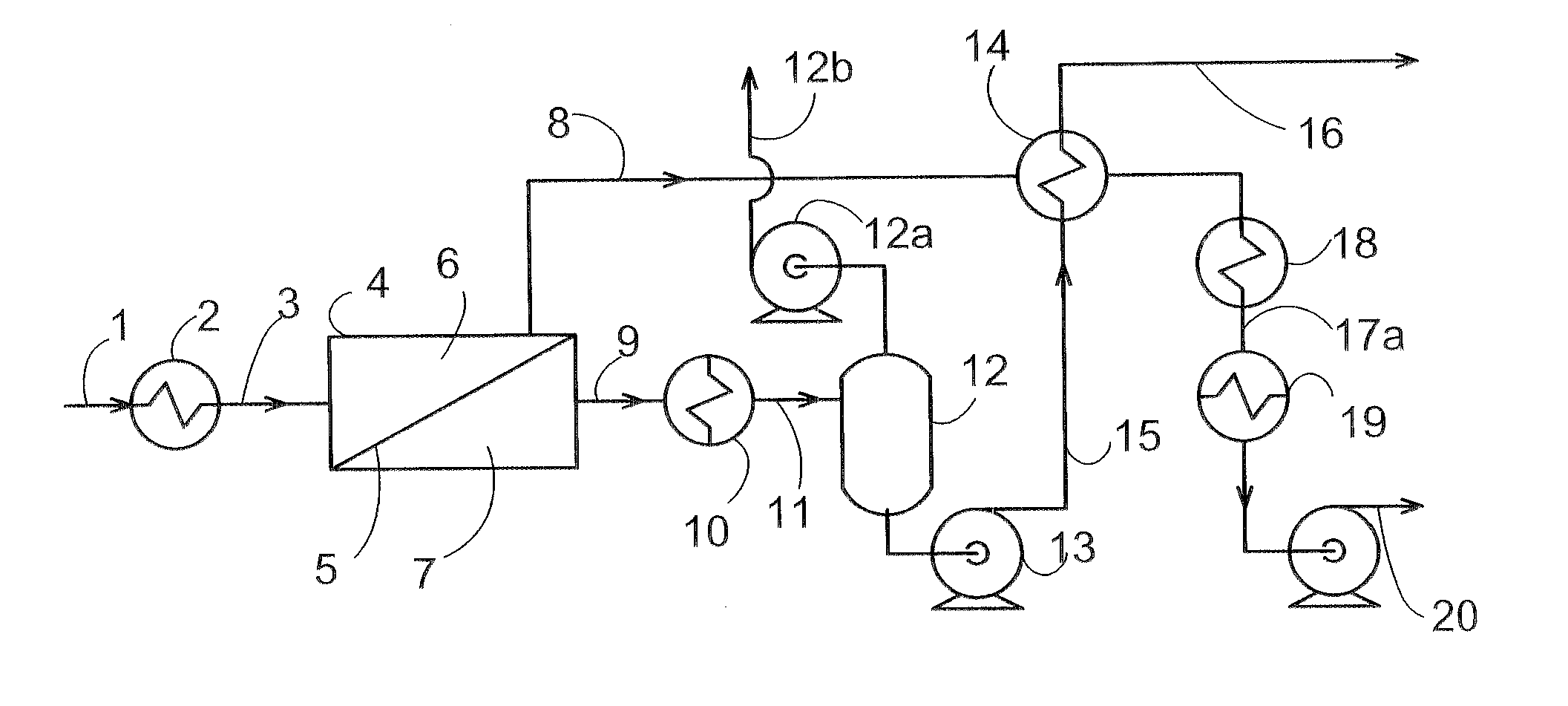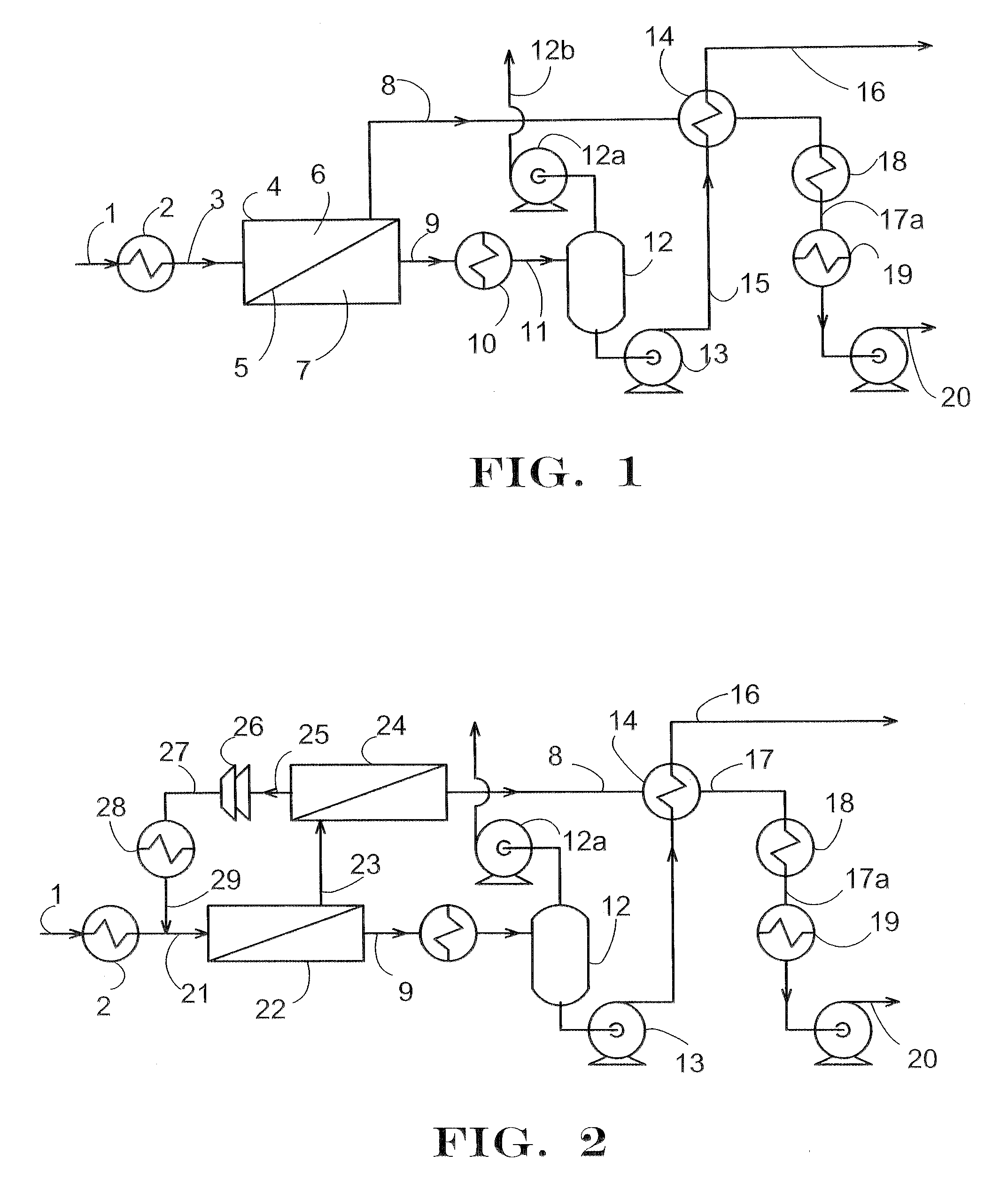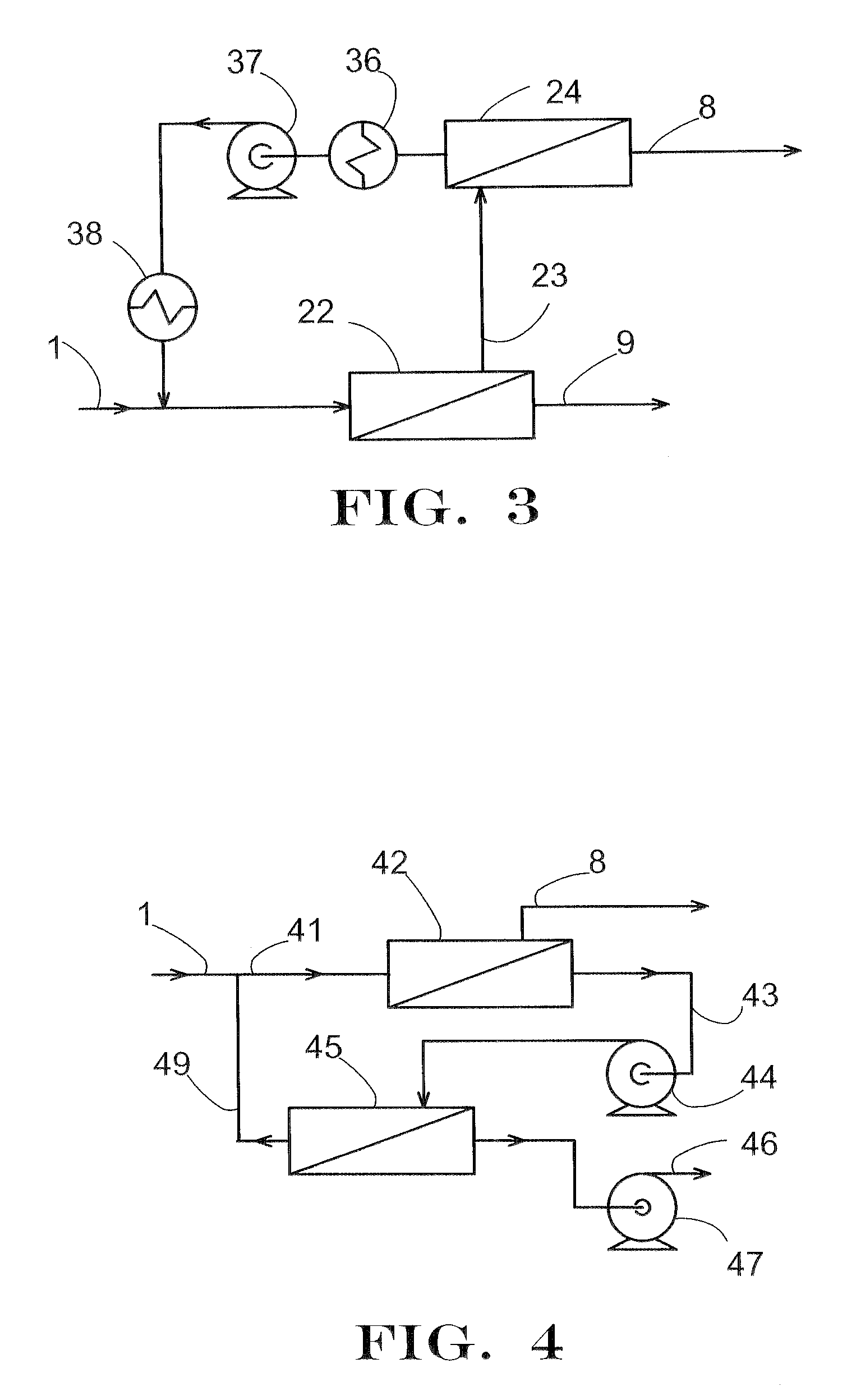Removal of Water and Methanol from Fluids
a technology applied in the field of membrane separation of water and methanol from mixtures, can solve the problems of increasing material cost, increasing operation cost, and requiring generally complex equipment and systems, and achieves the effect of improving water removal performance, increasing the driving force of transmembrane pressure gradient, and high effective separation of water and/or methanol
- Summary
- Abstract
- Description
- Claims
- Application Information
AI Technical Summary
Benefits of technology
Problems solved by technology
Method used
Image
Examples
example 2
Acid Formation in Wet Phosphate Ester Hydraulic Oil Dried by Membrane Separation
[0095] A membrane module having a flat sheet composite membrane of a copolymer of 87 mol % perfluoro-2,2-dimethyl-1,3-dioxole and 13 mol % tetrafluoroethylene (“TAF-2400”) on a porous substrate of expanded polytetrafluoroethylene (“ePTFE”) was utilized. The thickness of the TAF-2400 layer of the membrane was about 6 μm and effective area of the membrane surface was 1300 cm2.
[0096] The membrane module was installed in a testing apparatus shown schematically in FIG. 11 and operated as follows. A flask 121 containing 1250 mL Fyrquel 220 oil 126 was placed in a heated water bath 122 maintained at 90° C. and effective to control the temperature of the oil at 85° C. A stirrer, not shown, was used to agitate the oil in the flask. The oil was continuously recirculated by a gear pump 123 through transfer line 128, membrane module 129 and return line 131. Thus the liquid oil circulating at 64 mL / min. and pressur...
example 4
Acid Formation in Wet Biodegradable Hydraulic Oil Dried by Membrane Separation
[0101] Using the apparatus of FIG. 11 as described above, 12 liters of the biodegradable hydraulic oil of Comp. Ex. 3 was initially placed in the heated flask 121 with amount of water effective to achieve a 5,000 ppm water concentration. The oil was recirculated through the membrane module continuously for 26 days while maintaining temperature at 80° C. Once on each of days 3, 7, 9, 15 and 21, water was added to restore water concentration to 5,000 ppm because water concentration had decreased by permeation. Samples for total acid number were taken during the testing period and the results labeled “EX 4” are plotted as a function of duration in days “D” in FIG. 14.
[0102] Data of FIG. 14 show that without removal of water through the membrane acid developed gradually for the first 14 days then increased rapidly to a high TAN value at the 26th day. In contrast, the membrane treated oil continued to develop...
example 5
Water Removal from Wet Hydraulic Oil by Membrane Separation
[0103] The procedure of Ex. 2 was repeated except that the hydraulic oil initially wet to about 3,000 ppm water concentration was recirculated through the membrane module for 2 h with samples drawn periodically and analyzed for water content. The resulting data is presented in FIG. 15 as a plot of ppm water concentration “W” vs. hours of recirculation time “T”. The figure shows that the membrane was very effective at removing more than 95% of the initial 2,982 ppm of water from the oil in less than 2 hours of permeation to a concentration of 138 ppm water.
PUM
| Property | Measurement | Unit |
|---|---|---|
| pressure | aaaaa | aaaaa |
| temperature | aaaaa | aaaaa |
| temperatures | aaaaa | aaaaa |
Abstract
Description
Claims
Application Information
 Login to View More
Login to View More - R&D
- Intellectual Property
- Life Sciences
- Materials
- Tech Scout
- Unparalleled Data Quality
- Higher Quality Content
- 60% Fewer Hallucinations
Browse by: Latest US Patents, China's latest patents, Technical Efficacy Thesaurus, Application Domain, Technology Topic, Popular Technical Reports.
© 2025 PatSnap. All rights reserved.Legal|Privacy policy|Modern Slavery Act Transparency Statement|Sitemap|About US| Contact US: help@patsnap.com



